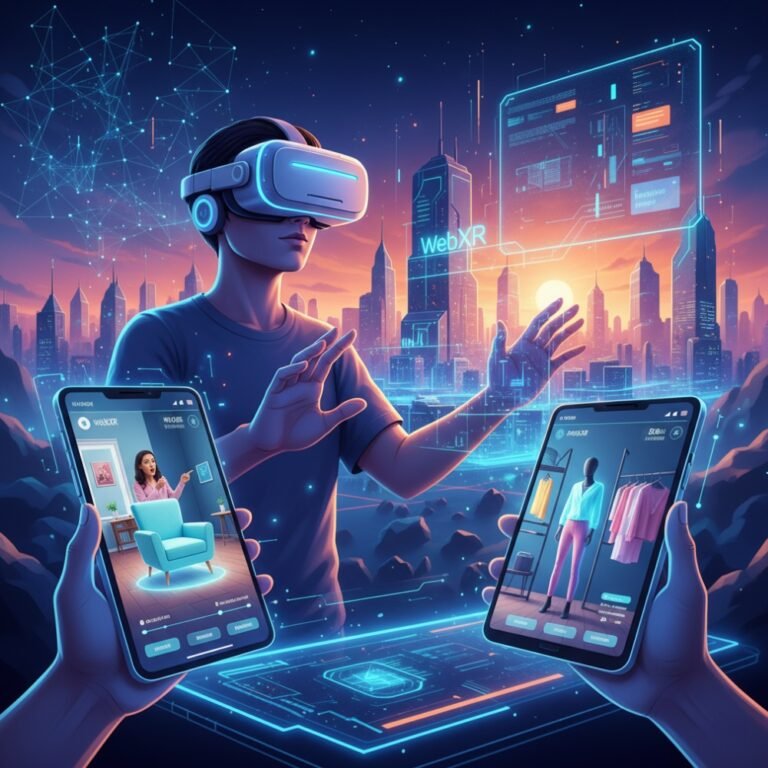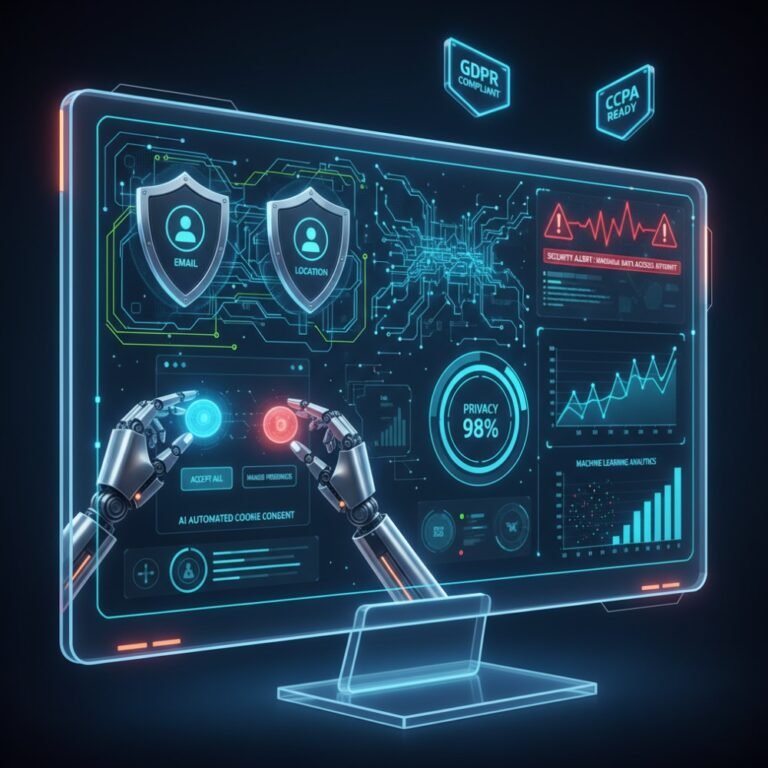AI-Generated UI/UX What it means and how it differs from traditional design
AI-generated UI/UX refers to the use of artificial intelligence to dynamically create and adapt user interfaces and experiences in real time, often based on user data, prompts, or predictive models. This approach leverages generative AI to produce layouts, wireframes, and interactive elements that evolve with user interactions, moving beyond static designs to create fluid, context-aware experiences. In contrast, traditional design relies on manual processes where designers craft fixed prototypes using tools like sketching or software, focusing on linear user flows and predefined personas. AI-generated designs introduce adaptability and complexity, such as outcome-oriented interfaces where AI anticipates needs rather than following rigid paths. Traditional UX emphasises user input-driven navigation, while AI-powered UX centres on intent prediction, reducing repetitive tasks and enhancing personalisation through data analysis. This shift minimises the need for extensive UI layers, as AI systems can generate bespoke elements on demand, potentially rendering tools like Figma obsolete for routine tasks.
History of AI in design (early automation → generative AI)
The integration of AI into design began with early automation in the mid-20th century, rooted in foundational concepts like Alan Turing’s 1950 paper on machine intelligence, which laid the theoretical groundwork for thinking machines. In the 1960s, initial automation emerged with tools like ELIZA, a chatbot simulating conversation, marking the first generative AI experiment by mimicking human-like responses. The 1970s and 1980s saw rule-based systems and expert systems for logical reasoning, with Japan’s Fifth Generation Computer Systems Project in 1982 aiming to automate problem-solving in design and engineering. By the 1990s, machine learning advanced automation through pattern recognition, evolving into CAD systems that automated drafting. The 2000s introduced deep learning, enabling more sophisticated simulations in engineering design. Generative AI truly accelerated in the 2010s with models like GANs (Generative Adversarial Networks) for creating variations, culminating in transformer-based systems like GPT in 2018, which revolutionised design by generating text-to-image and UI elements from prompts. This progression from rigid automation to creative generation has transformed design from rule-following to innovative ideation.
The Evolution of Web Design Tools
From Photoshop to Figma to AI-driven platforms
Web design tools have evolved from pixel-based raster editing to collaborative vector platforms and now AI-integrated systems that automate creativity. Adobe Photoshop, released in 1990, pioneered raster graphics for image manipulation but was labour-intensive for web layouts, requiring manual slicing for websites. The 2000s introduced vector tools like Illustrator, but web-specific needs led to Adobe Dreamweaver for code-assisted design. Sketch, launched in 2010, shifted focus to UI/UX with vector shapes and prototypes, emphasising macOS workflows. Figma, debuting in 2016, revolutionised collaboration with cloud-based real-time editing, browser access, and plugin ecosystems, enabling teams to iterate without file handoffs. AI-driven platforms like Uizard and Galileo AI, emerging around 2020-2022, build on this by using machine learning to generate designs from text or sketches, integrating with Figma for seamless workflows. This evolution prioritises speed, scalability, and intelligence, with AI tools now handling initial ideation to allow focus on refinement.
Milestones in design automation
Key milestones include Ivan Sutherland’s Sketchpad in 1963, the first interactive graphics system using a light pen for direct manipulation. The 1970s brought CAD/CAM integration for automated manufacturing previews. Autodesk’s AutoCAD in 1982 standardised 2D/3D automation in engineering. The 1990s saw parametric modelling in SolidWorks (1995), enabling rule-based variations. Adobe Sensei in 2016 introduced AI for auto-editing in Photoshop. Figma’s 2022 AI experiments marked generative UI entry, followed by widespread adoption of tools like Midjourney for design assets in 2023. By 2025, milestones include full AI prototypes from prompts, blurring design and development.
AI’s Role in UI/UX
How AI Understands User Behaviour
AI understands user behaviour by analysing vast datasets from heatmaps, clicks, scrolls, and session recordings to identify patterns and pain points. Machine learning algorithms process this data to visualise engagement hotspots, revealing where users focus or abandon tasks. For instance, AI detects anomalous sessions, such as sudden drop-offs, and correlates them with UI elements. Predictive analytics forecasts behaviours, like navigation weaknesses, enabling proactive adjustments. This data-driven insight supports personalisation, where AI tailors content based on real-time preferences, and predictive design anticipates needs, such as suggesting layouts before explicit input.
Personalisation and predictive design
Personalisation uses AI to customise interfaces dynamically, adapting elements like recommendations or layouts to individual profiles. Predictive design employs models to foresee user journeys, optimising flows for efficiency and reducing friction.
AI in Wireframing & Prototyping
Automatic wireframe generation from prompts
AI automates wireframing by converting text prompts into structured layouts, using natural language processing to interpret descriptions like “e-commerce homepage with search bar” into editable skeletons. Tools scan prompts for elements like navigation or forms, generating responsive frameworks in seconds.
Tools that turn text into design drafts
Platforms like Uizard’s Autodesigner transform sketches or text into prototypes, while Visily generates wireframes from diagrams. Figma AI creates prototypes from prompts, and UX Pilot uses multimodal inputs for detailed drafts. These tools accelerate ideation, allowing iteration via further prompts.
Generative Design Systems
How AI creates multiple design variations instantly
Generative design systems use algorithms like GANs to produce diverse UI variations from a single input, exploring parameters such as colour, layout, and typography. AI iterates thousands of options based on constraints, delivering instant alternatives aligned with brand guidelines.
Benefits for A/B testing
This enables rapid A/B testing by automating variant creation and deployment, analysing performance in real time to identify optimal designs without manual effort. AI refines tests dynamically, improving conversion rates and reducing setup time.
AI-Powered Layout Optimization
Smart grids and responsive layouts generated by AI
AI generates smart grids by analysing content and device data, automatically adjusting spacing and alignment for optimal flow. Responsive layouts adapt fluidly across screens, with AI predicting breakpoints and resizing elements for seamless viewing.
Accessibility-first design suggestions
AI ensures compliance with WCAG by scanning for issues like contrast or navigation, suggesting fixes such as alt text or keyboard-friendly structures. It prioritises inclusive elements, like voice-over compatibility, during generation.
Tools & Platforms
Top AI-Driven UI/UX Tools
Figma AI integrates generative features for prototyping and layout suggestions, with strengths in collaboration and ecosystem integration, but limitations in standalone creativity without human input. Uizard excels at text-to-prototype conversion and sketch scanning, offering speed for non-designers, though outputs can be unreliable and lack Figma export. Galileo AI generates high-fidelity UIs from prompts, strong in visual quality and iteration, but limited by template dependency and occasional inaccuracies. Framer AI automates animations and responsive designs, ideal for interactive prototypes, yet struggles with complex custom logic. Other tools like Visily provide free AI wireframing with strong multimodal support, but may require editing for polish.
Their strengths and limitations
Overall, these tools boost efficiency in ideation and testing, with strengths in automation and accessibility, but limitations include over-reliance on prompts leading to generic results and integration challenges with legacy workflows.
AI Plugins and Extensions
Plugins for Figma, Sketch, Adobe XD
Figma’s ecosystem includes MagiCopy for AI text generation, Automator for task scripting, and Codia AI for design-to-code. Sketch offers plugins like Magestic for icon sets and Anima for exports. Adobe XD integrates Sensei-powered extensions for auto-layouts and Stark for accessibility checks.
Workflow integrations with dev tools
These plugins connect to GitHub, Jira, and VS Code, automating handoffs from design to code. Anima converts Figma to React, streamlining dev pipelines.
Future Trends
Hyper-Personalized AI-Driven Web Design
Websites adapting like living organisms
Hyper-personalised designs use AI to evolve interfaces in real time, morphing layouts based on behaviour, akin to adaptive organisms responding to stimuli.
Predictive user journey mapping
AI maps journeys proactively, forecasting paths with IoT data for seamless, anticipatory experiences.
Voice-Driven & Gesture-Based UI/UX
AI creating UIs for non-traditional interfaces
AI generates voice UIs by analysing speech patterns for natural dialogues, and gesture-based systems via computer vision for intuitive controls.
Beyond screens: AR, VR, and spatial UX
Spatial UX in AR/VR employs hand tracking and gaze for immersive layouts, with AI optimising 3D environments for comfort and context.
The Designer’s Role in the AI Era
From creators → curators → experience strategists
Designers transition from manual creators to curators of AI outputs, refining generated designs for empathy and ethics, evolving into strategists orchestrating user experiences.
Human-AI hybrid workflows
Hybrid workflows involve AI for ideation and testing, with humans guiding strategy and validation, fostering collaborative efficiency.
The Next Decade of AI UI/UX Tools
Predictions for 2027 and beyond
By 2027, AI agents will automate full UX flows, replacing routine tasks and enabling spatial, ethical designs in AR/VR. Beyond, tools will predict superhuman capabilities, focusing on value-driven, adaptive systems with deep UX integration, shifting to ambiguity-handling and ethical oversight. Immersive interfaces and AI copilots will dominate, requiring designers to master orchestration over creation.







